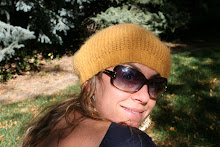
In positing the question, "Why did I decide to work in a Reggio-inspired studio at the center of a Montessori school?", I realize the answer is both simple and complex. I have often joked that I am a Montessori teacher and a Reggio mama. In evaluating the Reggio-approach, it is not difficult to understand how it evolved from a parent cooperative. For many of us, asking questions and exploring possibilities is a natural part of parenting. The Reggio social-constructivist view makes sense within the context of a family and community, where each member is interdependent and co-creating their experience of the world. When my son's ask me, "Why does a bird fly?" or "What color is hot?". I don't offer explanations, but curiosity and they, in turn, open the door to a magical universe called childhood, seen through new eyes and understood with a "beginner" mind. Together we discover new things, new possibilities and we log these in photos, journals, sculptures, books and creations of every description. We are partners in this great discovery of life, each member an integral part and each voice equally important.
As a teacher, I was drawn to Montessori education by the philosophical view of the child and the deep respect for the inner gestalt within each of us from our first breath. Montessori's focus on autonomy and independence reflected a view of the child as capable and deserving of dignity and respect. Her view of the teacher was not as an orchestrator of a child's learning but as a director. Placing the adult at the periphery, ensuring that a child's environment is rich, diverse and respectful of the unique needs of each stage of development, so that the child can carry on the task of self construction, sufficiently supported but not hindered. Both the Montessori and the Reggio approach to early childhood education, resonate with me, not as separate education models but as an integrated and comprehensive lens through which to better understand the innate wisdom of childhood and respond accordingly.
That said, it is far easier for the left-brain, rational, reasoning, scientific mind to approximate an "understanding" of the Montessori method. I have taken two separate trainings in Montessori education for 3-6 year olds. I have albums full of lesson write ups, philosophy, child development theory and photos. I know how to set up an activity so that it calls to a child. I know how to ensure that a material is auto-didactic, self correcting and encourages the development of order, concentration, coordination and independence. I have fully considered how I carry and roll a rug, present a material, set up the classroom, and why. I know how to model for my students and withdraw to observe the dance of discovery and mastery. Montessori left a very specific road map to follow. She was a scientist and the Montessori Method was her great experiment. Every scientist knows, a good experiment must be duplicable and her training centers were set up to impart her method.
The Reggio approach is not as concrete, it is heavily influenced by the community it evolves in and emerges from and so it can not be transplanted from there to here. It is less linear and it seems to be more readily understood via the intuitive faculties metaphorically associated with the right brain. There is no real road map and no certifying agencies or training centers nearby. There are questions and values. This doesn't trouble me, as an artist, this approach speaks to me with equal tenacity, depth and meaning.
I am excited by the year ahead. I feel the rush of adventure when staring at a horizon that blends two philosophies into a promising whole. Accepting a position for teaching in the studio after 7 years of teaching in a classroom (and one in the studio 2 years prior), was not a difficult decision. It was a thrilling opportunity.

No comments:
Post a Comment